The Process of Building Dungeons
I knew from the beginning that You Will Die In This Place was going to be a dungeon crawling TTRPG and that it would require maps of at least some of its dungeons. It is not really an OSR type game, though it shares some DNA with them albeit more through coincidence than intention. It is a game that is deeply rooted in the lives and personal histories of its fictional authors - as well as mine, being the real author behind the layers of metanarrative. Charlotte, the game's fictional creator, designed it in the early-mid 2000s before disappearing, leaving it unfinished. I imagined that her original dungeon layouts would have been scrawls on squared paper - so mine mostly were too. Samantha, on the other hand, the fictional indie developer who decided to finish the project, would have had the task of adapting these sketches into a professional looking presentation standard, while still maintaining something of their retro feel. This is the challenge which became mine.
I considered hand drawing the maps in perspective and painting them with acrylics. I think, with enough practise on my part, this would have looked really good. However, it was a bit of a non-starter for two main reasons. The first being that the quantity and complexity of maps needed would have created a monumental workload for me on top of the writing, layout, design and illustrations that I was already doing. I would have burned out, there's no doubt about that. Sometimes we have to make adjustments and difficult artistic decisions that are as much for our own mental health and productivity as they are for the quality of the project. I don't think there's any shame in admitting that. A solo developer can only juggle so much without dropping everything.
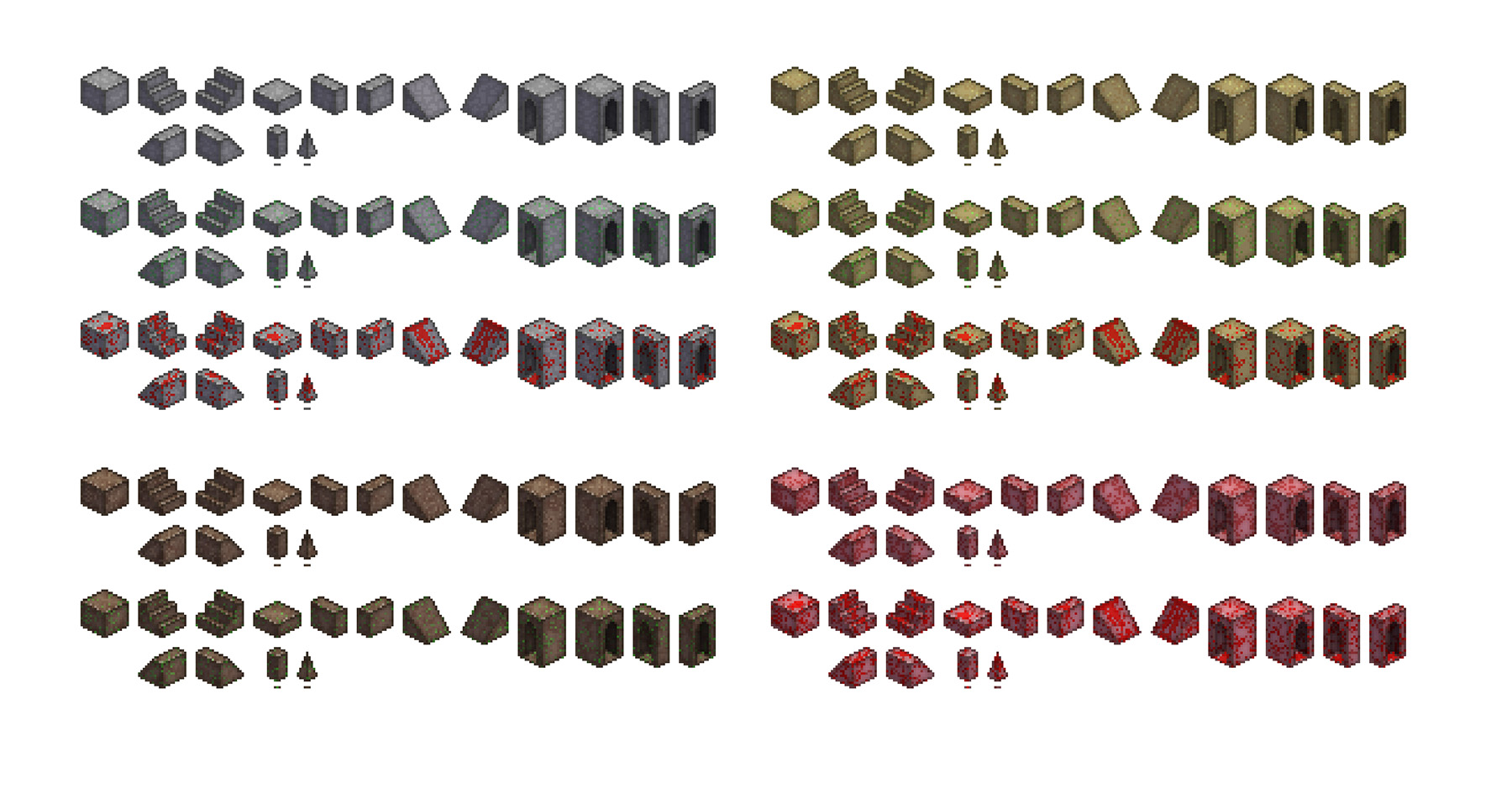
My next idea was a series of 2d pixel art maps which would make use of repeatable tiles, possibly embellished with some hand drawn additions and details. I really liked the idea of an isometric view, as this strongly evoked the look of retro video game environments of the sort that Charlotte and Samantha might have grown up with. I personally have some quite vivid memories of buying issues of PC Gamer back in the late 90s and imagining how the events frozen in the detailed screenshots might have played out. Here are some of the initial prototypes and layouts that I threw together.
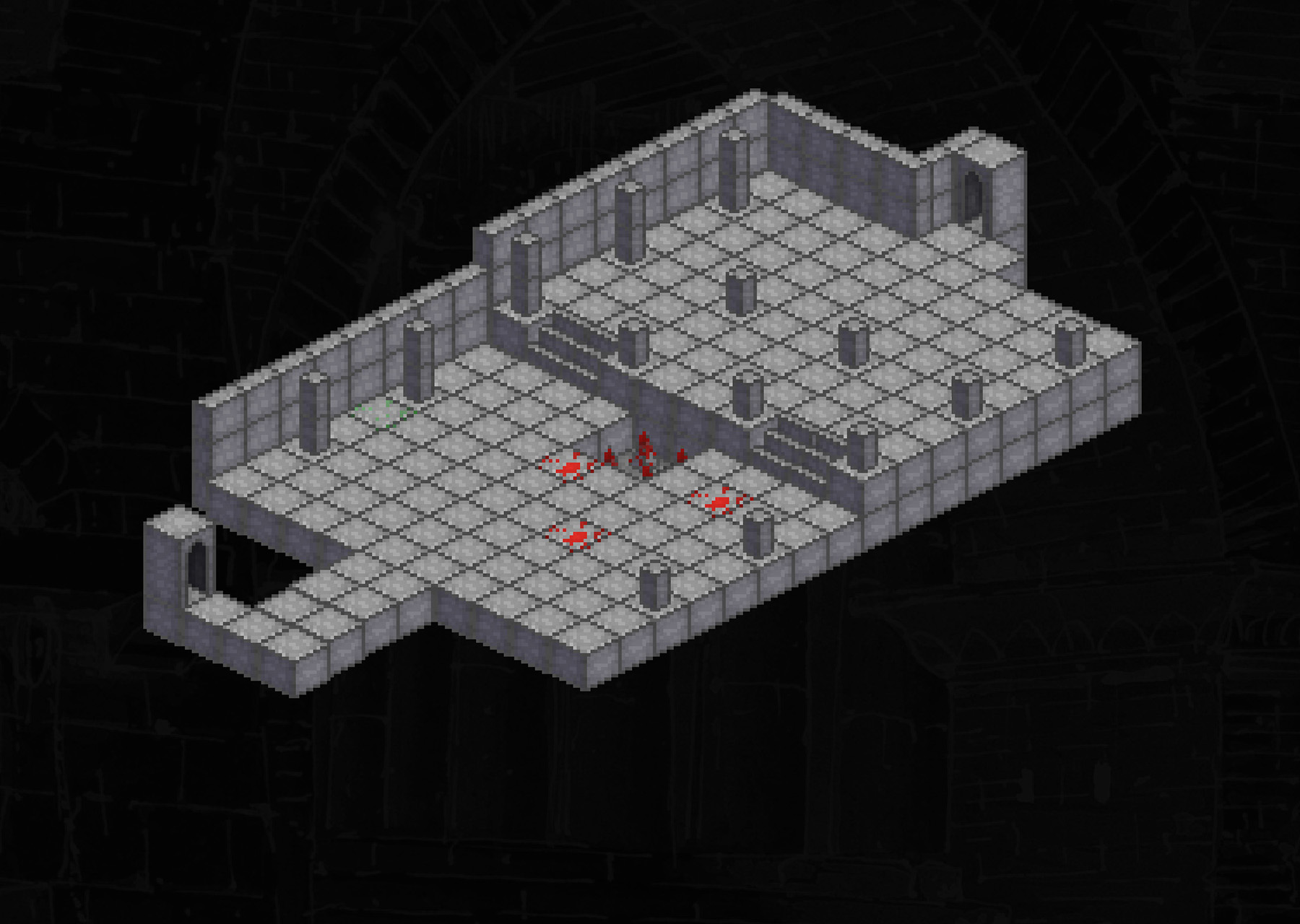
There was, however, a number of problems with this approach. Although it was a lot faster and easier to repeat than hand drawing everything, it was still quite fiddly and errors could be difficult to correct if they were spotted late into the process. More seriously, there were functionality issues. Some layouts did not well lend themselves to an isometric view, with some parts of a map blocking other parts. The maps would also have to fit well on a page at a functional size. Without throwing away usability altogether, it heavily restricted the type and size of maps that could be created. On the plus side, it did enable some Escher inspired impossible geometry and tricks of perspective that were too thematic to ignore.
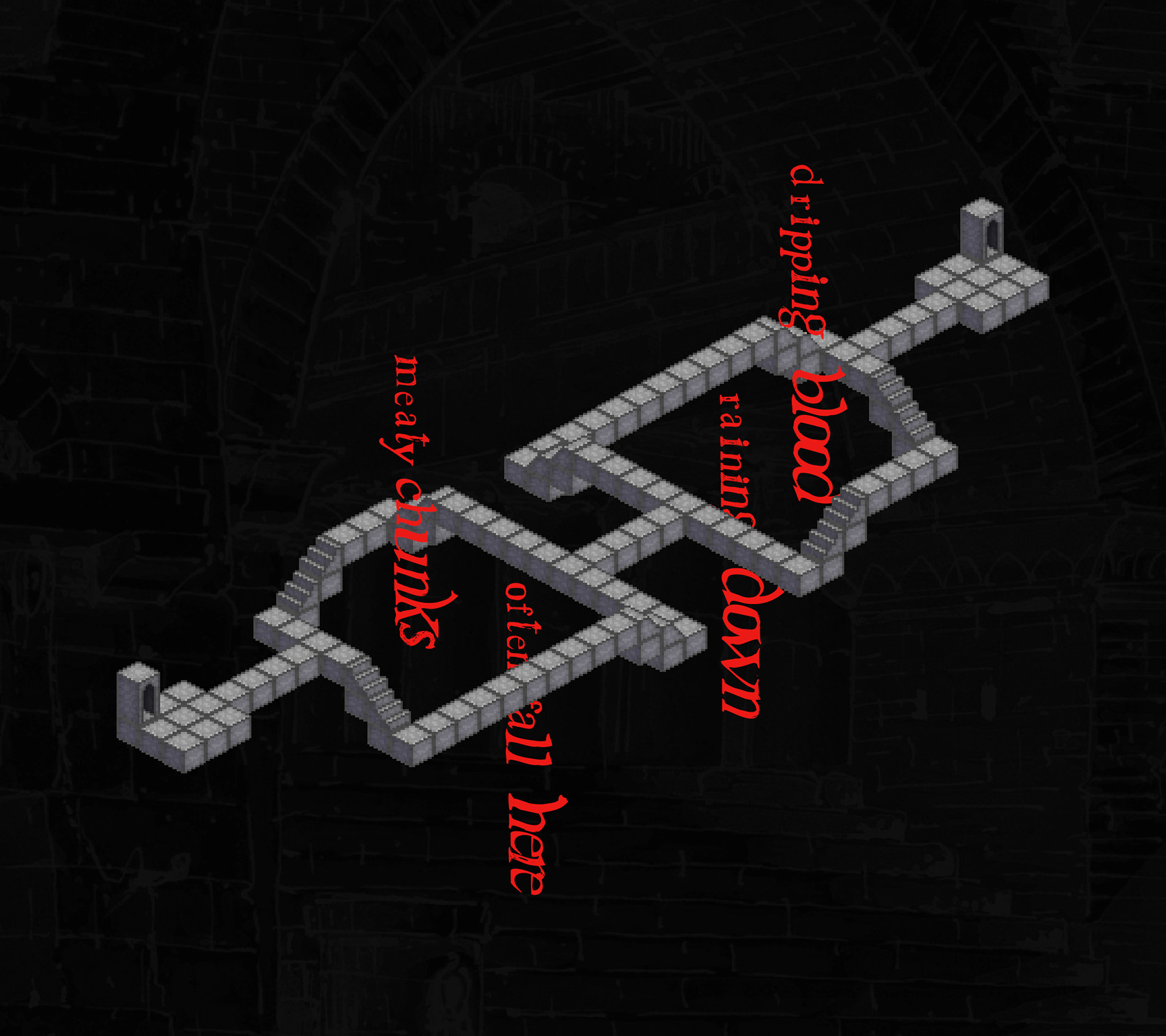
A move to more traditional top down maps would solve most of the usability problems, at the cost of throwing away the neat elements that the isometric designs had. Doing both views, or switching them up depending on the type of map, became the preferred solution. Unfortunately, if the maps remained as 2d pixel art, it would require the creation of two versions of each map, doubling the amount of work.
3d design became the only realistic choice, having most of the benefits of the pixel art maps. Perhaps, in hindsight, this solution should have been obvious from the start. Regardless, this is where things ended up after a period of trial and error. As usual, I used 3dsmax, being the software that I have and know best, though I suspect that a number of alternatives could probably manage it better.
The fundamental part of every map is a set of tiles scaled to perfectly fit together such that their centres are arbitrarily 10 units apart. This makes it very easy to quickly block out the floor plan of any given map and then use the substitute modifier to replace any necessary blocks with appropriate alternatives (e.g. swapping a floor tile for a stair tile). Verticality can then be added manually by moving tiles around in 5 unit increments on the Z-axis.
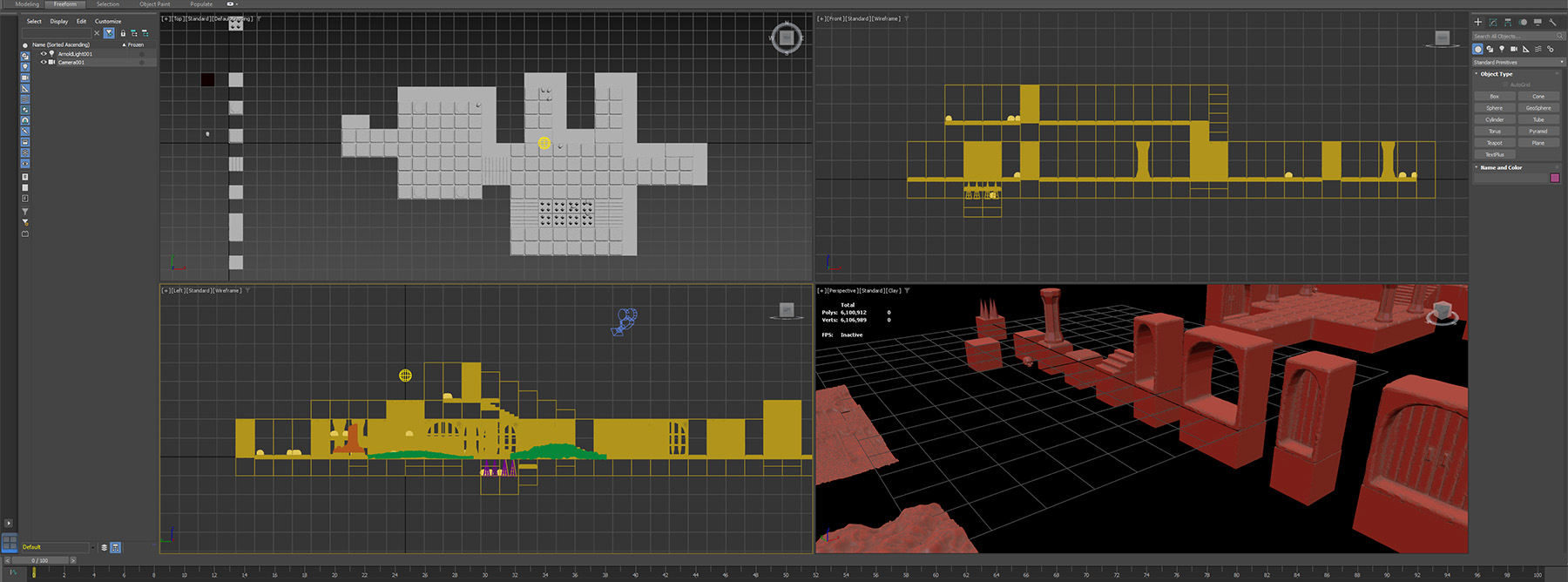
For the final visuals, I wanted something that would be easy and consistent to achieve. I considered unwrapping and texturing the tiles, so that the maps would be in colour, but after a bit of experimentation I preferred the starker contrast of mostly white maps against the dark backgrounds of the book's pages. I set up a directional light to cast some shadow and added a material using 3dsmax's toon shader to add a bit of sketchy texture to the images. The result wasn't bad, but looked a bit flat and had some occasional readability issues due to the high contrast. I solved this by doing an ambient occlusion pass and then compositing the two images together in photoshop using the multiply layer blending mode.
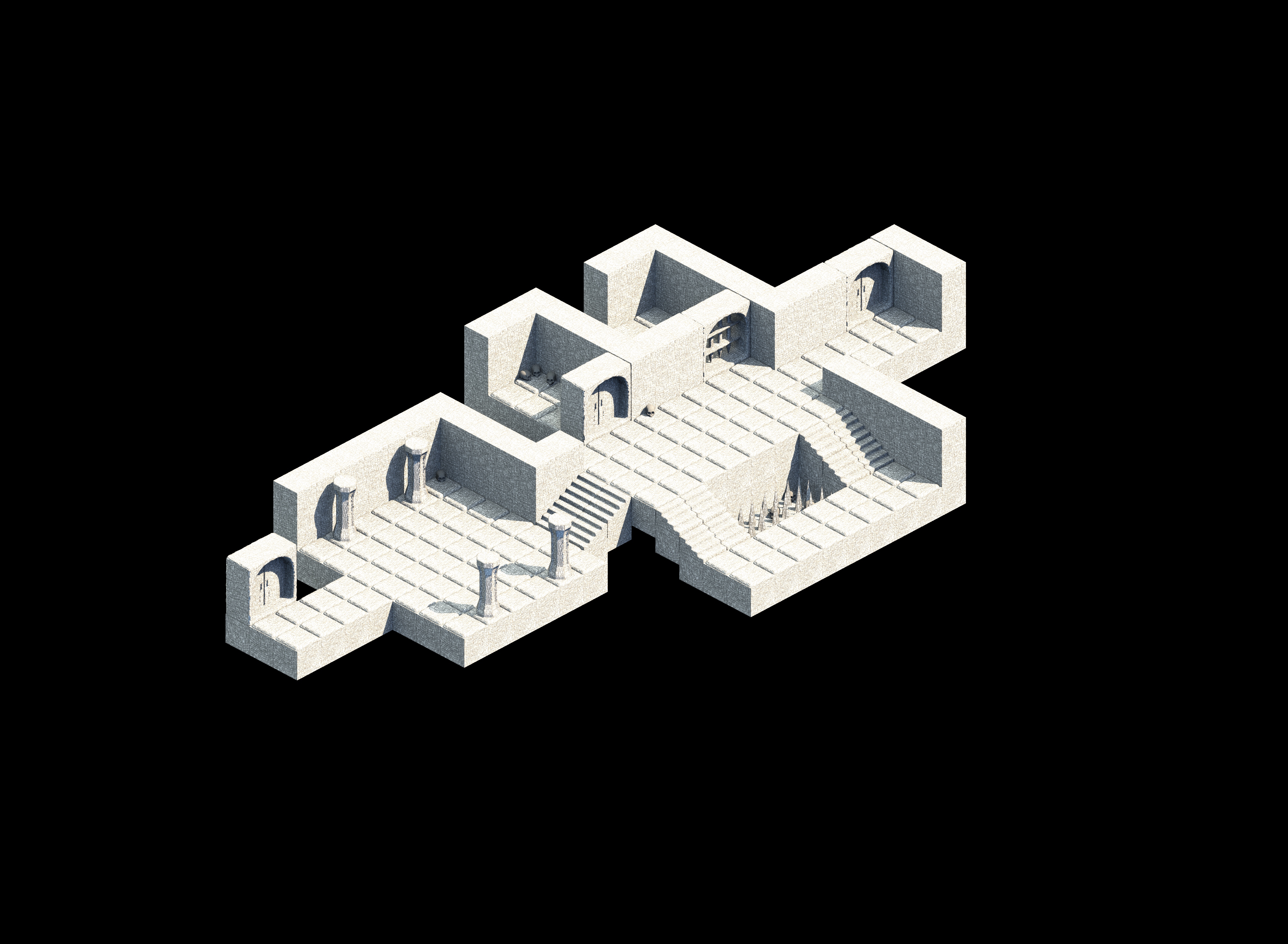
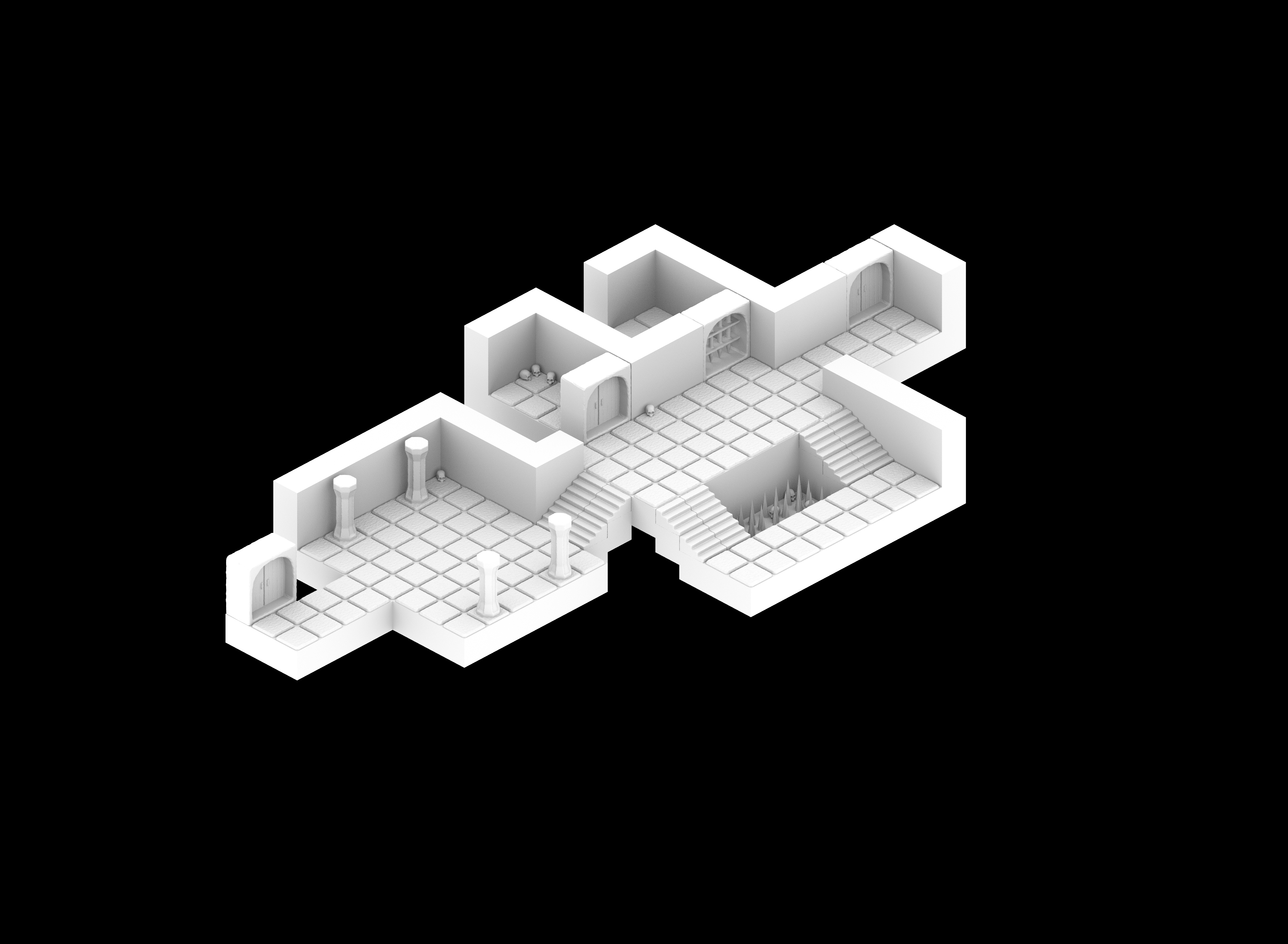
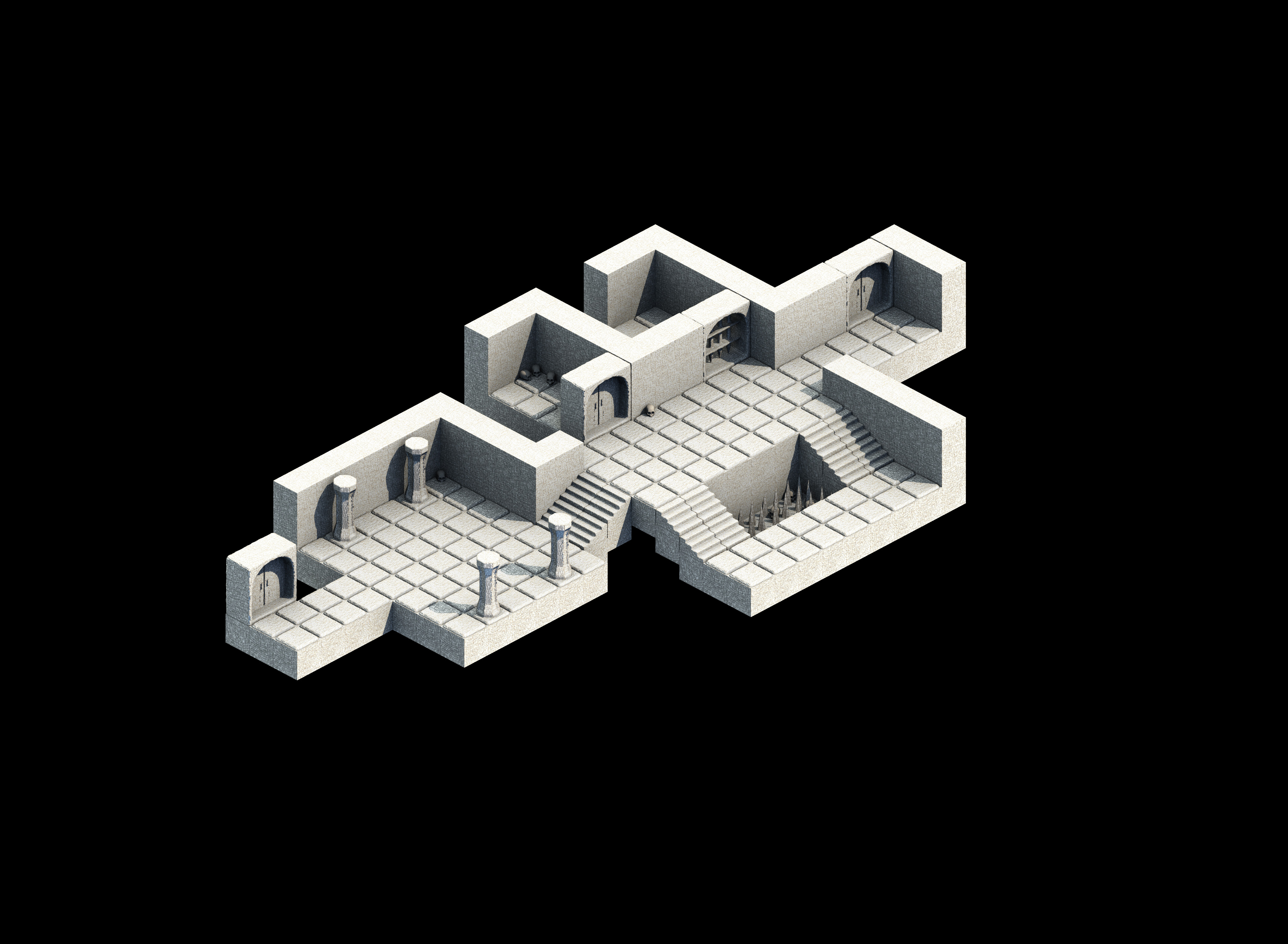
With a little bit more photoshop trickery and compositing, I was even able to repeat some of the Escher-inspired impossible geometry of the earlier pixel art maps.
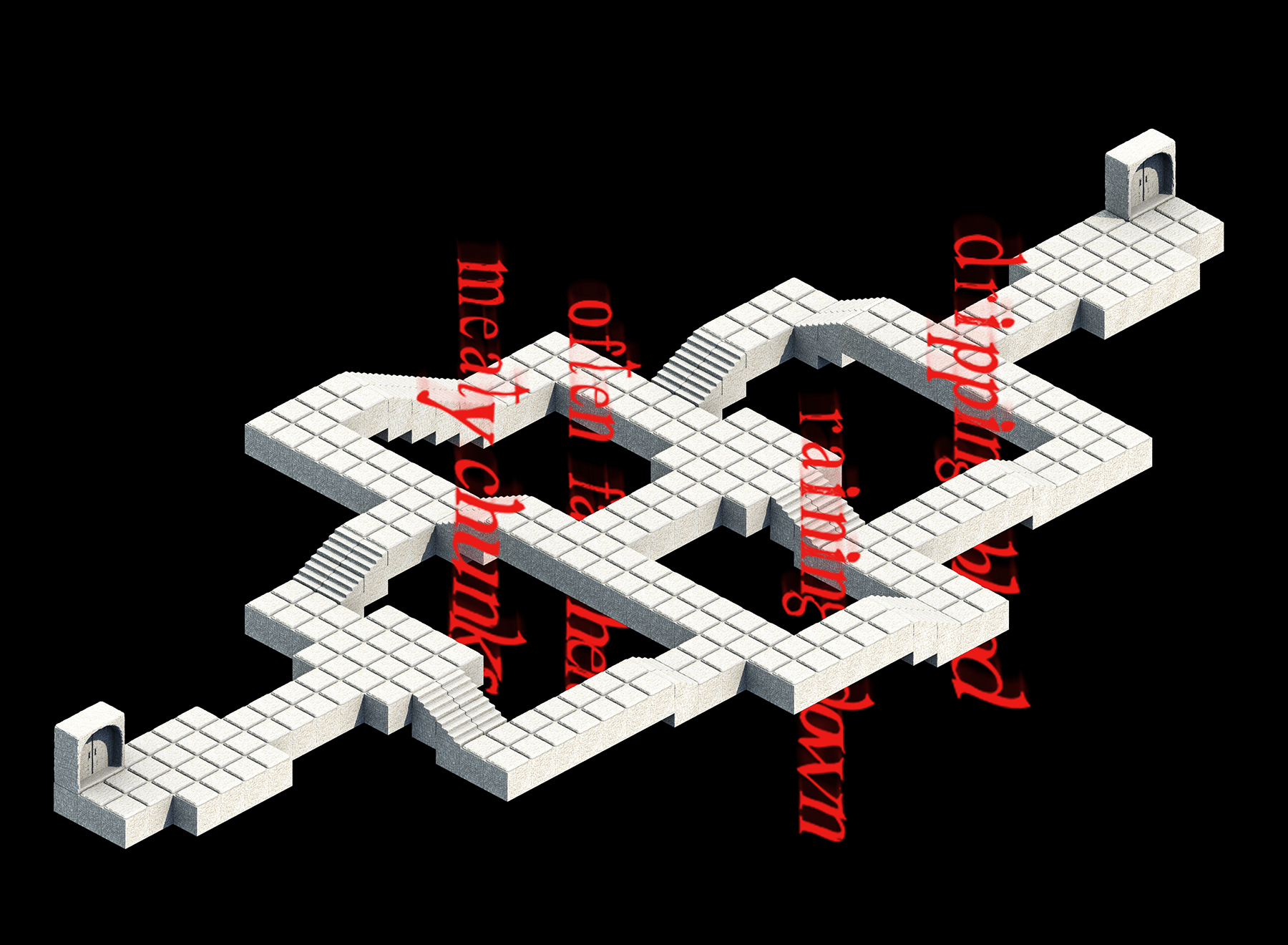
That leaves the issue of map design itself, which is a combination of bespoke, encounter-centric maps and designs influenced by fictional or real world locations. Within the Abyssal Labyrinth of You Will Die In This Place, you will find all of the above: rooms built around the lairs of nightmarish creatures like the Manglerwurm; chambers where undead labourers toil, excavating the petrified synapses of a dead god; and spaces modelled after the hedge maze from the Overlook Hotel or the floor plan of the British Museum.
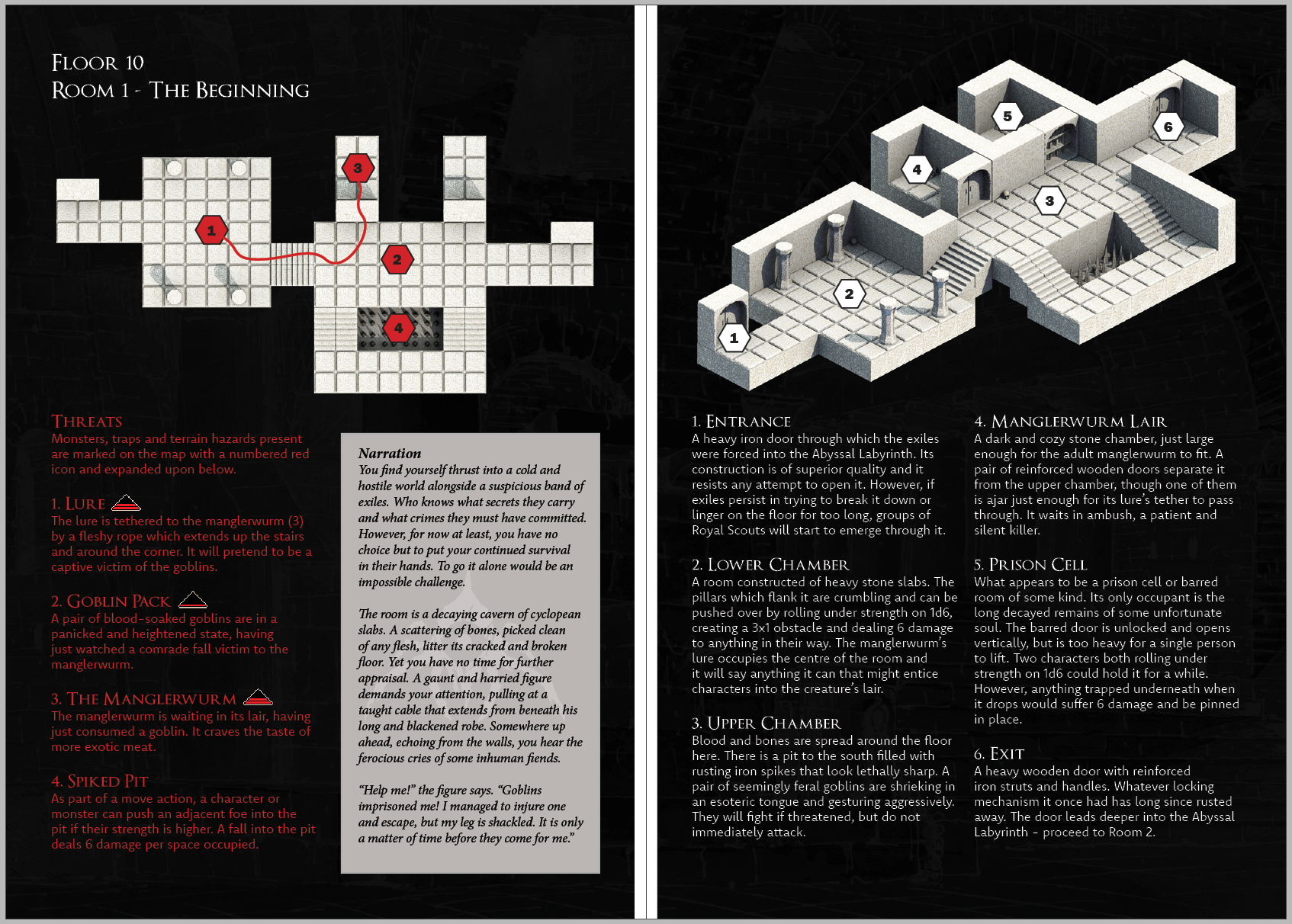
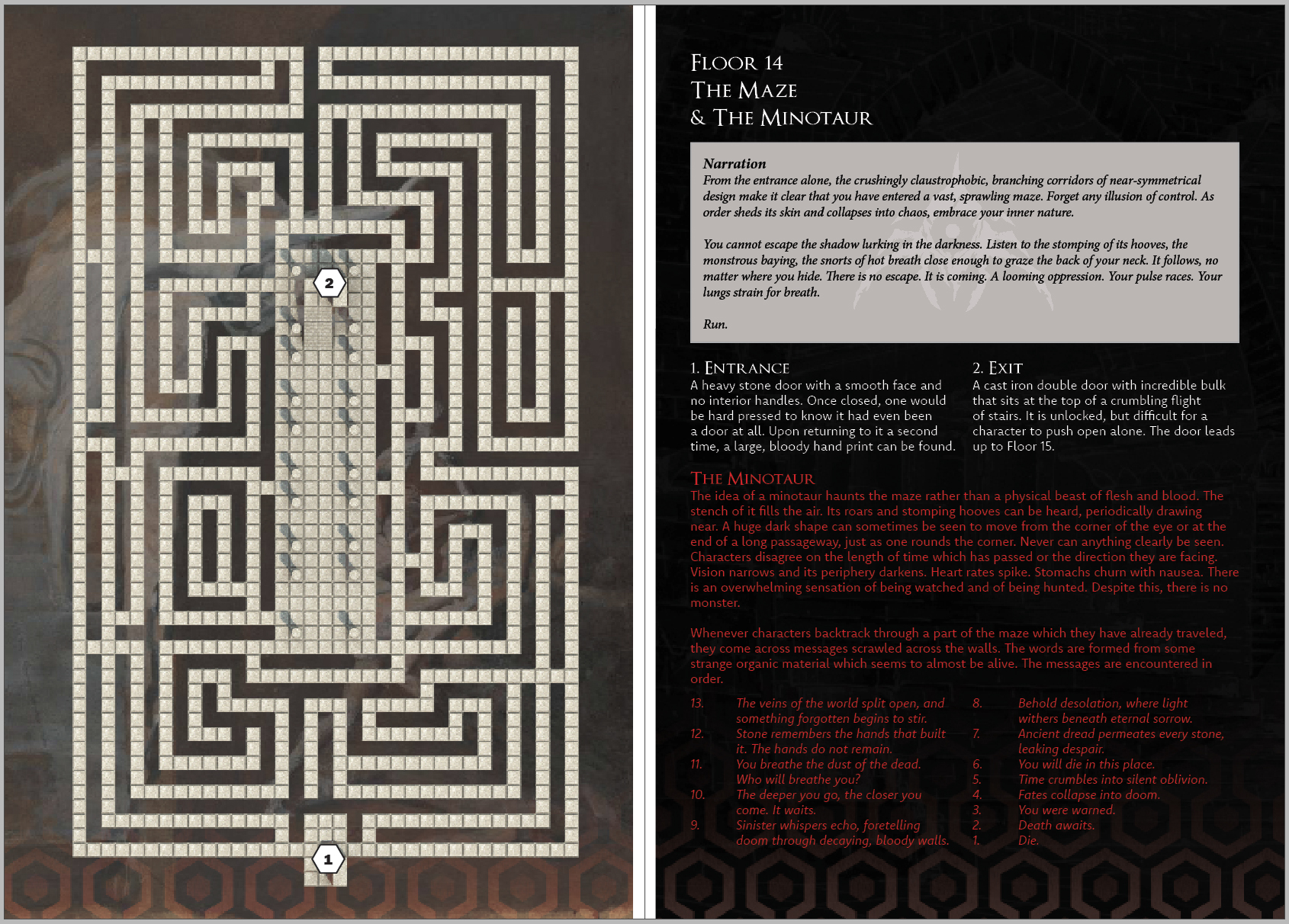
Get You Will Die In This Place (development preview)
You Will Die In This Place (development preview)
A nihilistic dungeon crawler about death, art and identity.
| Status | In development |
| Category | Physical game |
| Author | Liz |
| Tags | Atmospheric, Creepy, Dark Fantasy, Dungeon Crawler, Horror, Narrative, Psychological Horror, Survival Horror, Tabletop, Tabletop role-playing game |
More posts
- Announcement - Selected for Gamefound RPG Party23 days ago
- Translating Narrative Themes Into Mechanics - Character Classes (part 1)50 days ago
- Major Update - New Preview Available54 days ago
- The Cost of Art (And Maximising Value)58 days ago
- The Transient Nature of Ideas59 days ago
- The Process of Creating Miniatures60 days ago
Leave a comment
Log in with itch.io to leave a comment.